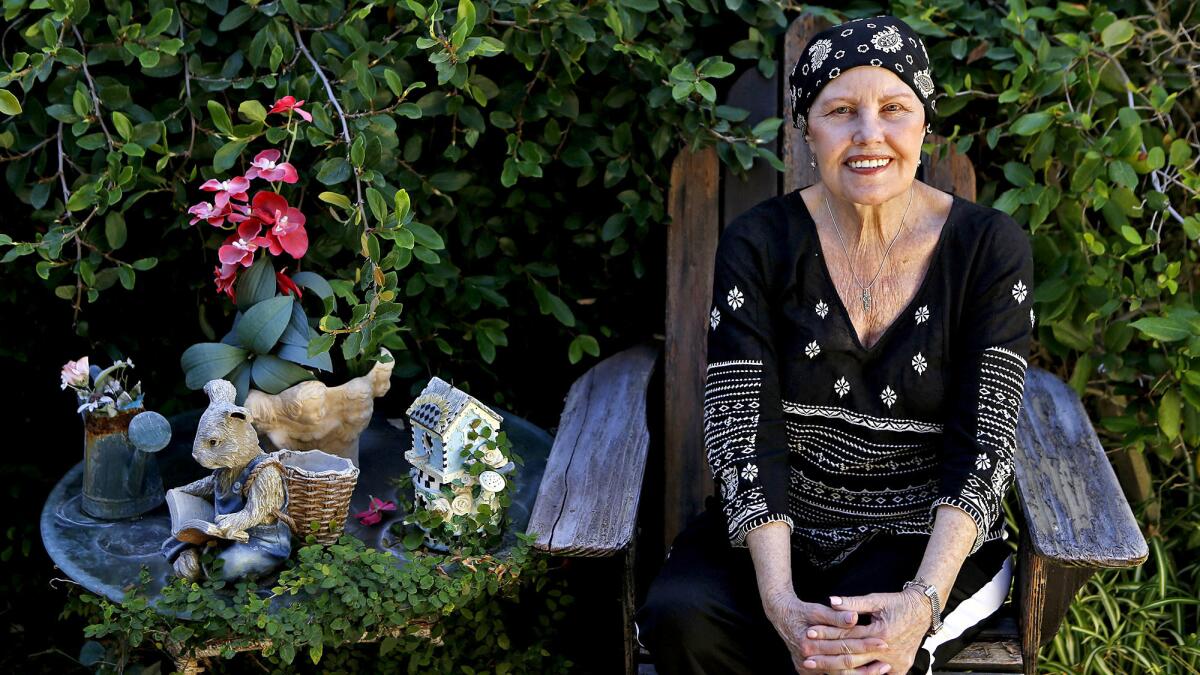Years after falling victim to a Ponzi scheme, Simi Valley retiree wins $15.6-million judgment

- Share via
Years after losing her retirement savings to a Ponzi scheme run by a Sherman Oaks money manager, Christine Ramirez could soon get it back — and much, much more.
A Los Angeles jury this week found that New York insurance giant MetLife, two of its subsidiaries and a local insurance broker should not only compensate Ramirez for the $240,000 she lost to the scam, but also pay the Simi Valley retiree more than $15 million in punitive damages.
“I can’t believe it,” said Ramirez, who is in her mid-70s and fighting late-stage breast cancer. “It feels wonderful.”
Although MetLife officials indicated that they might appeal the case, the amount of punitive damages awarded to Ramirez could make it more likely for the insurer to pursue settlements with nearly 100 other plaintiffs who also lost money to deceased money manager Bruce Fred Friedman.
MetLife spokesman Chris Stern said the insurer was “disappointed with the outcome and we anticipate appealing this decision.”
After an eight-week trial, a Superior Court jury on Tuesday found MetLife, two of its subsidiaries and broker Tony Russon liable for negligence and aiding and abetting both elder financial abuse and violations of California securities law. The defendants were ordered to pay $240,000 to Ramirez to compensate her for investment losses.
On Wednesday, the jury said MetLife and its subsidiaries should pay Ramirez $15 million in punitive damages, and that Russon should pay $360,000, bringing Ramirez’s total award to $15.6 million.
Ramirez’s story began in 2008, when she heard a pitch from insurance salesman Scott Brandt who said she could invest in a company called Diversified Lending Group, or DLD, that guaranteed an annual return of 12%. She said Brandt told her she could use the proceeds of that investment to buy insurance from MetLife.
Ramirez didn’t buy the insurance but she did invest in DLG, which was run by Friedman. She said Brandt — who was not named as a defendant in her suit — made it seem like MetLife was DLG’s parent company or was somehow backing it.
Thomas Foley, one of Ramirez’s attorneys, said it’s easy to see why she’d think that.
“Brandt’s office was in the MetLife building on Ventura Boulevard,” Foley said. “He carried MetLife business cards. She went to the MetLife building and was brought to a conference room with MetLife signage.”
The insurance company’s apparent involvement with DLG, Ramirez said, is why a guaranteed return of 12% didn’t make her suspicious.
“I thought I was investing with MetLife,” Ramirez said. “I know MetLife. My sister worked for MetLife. I felt very, very comfortable.”
Believing her returns were guaranteed, Ramirez not only put all of her retirement savings into DLG, but also took out a home equity loan and invested that money. In all, she entrusted DLG with about $280,000.
It turns out, though, that DLG was a Ponzi scheme and was able to make those 12% return payments to investors only as long as new investors kept pouring money into the company. Meanwhile, Friedman, who founded DLG in 2004, was funneling investors’ money into his own pocketbook, according to the Securities and Exchange Commission.
The agency in 2009 shut down the firm and froze Friedman’s assets, saying Friedman had diverted investors’ money into business ventures that investors were never told about and that he’d used at least $17 million to fund his own lavish lifestyle, buying among other things a $6.5-million Malibu home and luxury cars.
He also started his own charitable foundation that pledged millions of dollars to help the Los Angeles Dodgers build baseball diamonds around the city and $10 million to fund a San Fernando Valley children’s museum. The foundation never paid either the team or the museum, and the museum declared bankruptcy after the SEC froze Friedman’s assets.
Before he could be prosecuted, Friedman fled the country and in 2010 was arrested at a hotel in Cannes, France. He died in French custody in March 2012, three years after the SEC shut down DLG.
A court-appointed receiver took over DLG, working to recover as much money as possible and return it to investors. After final payments were made last year, investors walked away with about 11 cents for every dollar they invested with Friedman.
Between that and a few initial payments Ramirez received from DLG before the scheme crumbled, she lost about $240,000.
“That was my life savings,” she said. “I made up my mind a long time ago that that money was gone.”
That DLG was a scam was not at issue in the case. Rather, the dispute boils down to whether MetLife should be responsible for the actions of the insurance salesman who pitched DLG to Ramirez and others.
In their arguments to the court, MetLife’s attorneys said Brandt was not exclusively a MetLife agent, that MetLife had no business relationship with DLG and that Ramirez had no relationship with MetLife.
But Ramirez’s attorneys successfully argued that Brandt was answerable to Russon, a MetLife-affiliated broker, and that MetLife was responsible for Russon’s actions.
Russon, Ramirez’s attorneys said, had a business relationship with Friedman and the two together came up with the notion of getting investors to jointly invest in DLG and take out MetLife insurance policies. Russon’s attorneys declined to comment.
“Companies have to be liable for the conduct of their agents,” said Richard Donahoo, another attorney representing Ramirez and other investors who are pursuing claims against MetLife.
Ramirez is one of 98 plaintiffs who have sued the insurer in a handful of cases related to investments in DLG, but her case was allowed to proceed first because of her medical condition. A case involving more than 30 plaintiffs could go to trial next spring.
With MetLife indicating it may appeal this week’s verdict, Ramirez’s payout is not yet a sure thing. Still, she has some ideas for what she might do if the awards hold.
For the last few years, she’s been renting out a room in her two-bedroom home to make ends meet — something she’d no longer have to worry about. And she’d like to travel and visit family on the East Coast, something she hasn’t been able to do since losing her next egg.
As for the rest of the money she might get, Ramirez knows right where she’ll put it.
“It’ll go right into a savings account,” she said. “No more investing for me.”
Follow me: @jrkoren
UPDATES:
3:50 p.m.: This article was updated with additional comments from Ramirez and her attorney.
1:40 a.m: This article was updated with additional information about the jury award and other details.
This article was originally published at 7:40 p.m. on Aug. 31.
More to Read
Inside the business of entertainment
The Wide Shot brings you news, analysis and insights on everything from streaming wars to production — and what it all means for the future.
You may occasionally receive promotional content from the Los Angeles Times.











